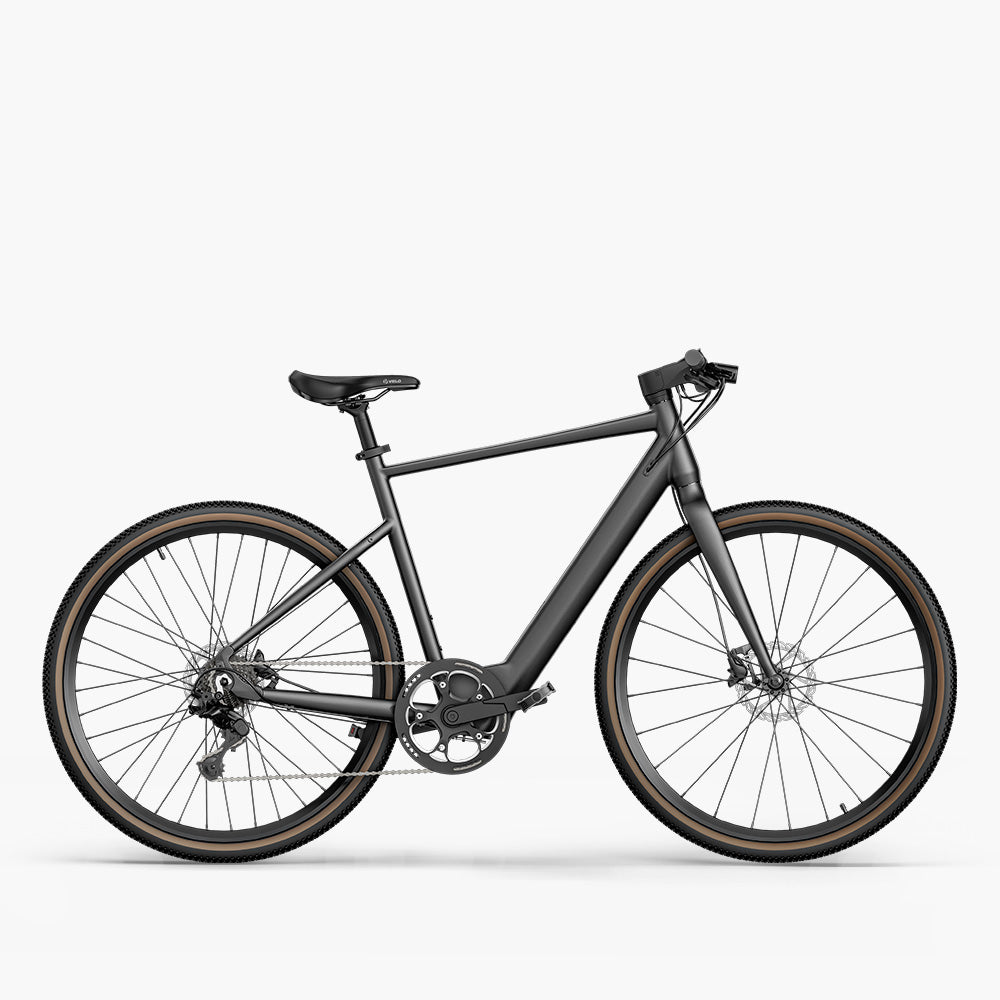In the EU, an e-bike is not considered a motor vehicle as long as it complies with the EPAC (Electrically Power Assisted Cycle) requirements set out in Regulation (EU) No 168/2013. It is treated as an electrically assisted pedal cycle, which means it is regarded in the same way as a conventional bicycle under EU traffic law.

Why an E-Bike Is Not Classified as a Motor Vehicle
To qualify as an EAPC in the EU, a cycle must meet the following requirements:
-
The motor's maximum continuous rated power must not exceed 250 watts;
-
Motor assistance is only activated when the rider is pedaling, and it must cut off immediately when pedaling stops;
-
The maximum assisted speed must not exceed 25 km/h.
Legally, this means such a vehicle is defined as “a human-powered vehicle with electric assistance”, where the rider remains the primary source of propulsion rather than the motor. As a result, under traffic laws in EU member states, e-bikes are treated the same as conventional bicycles. They are not subject to motor vehicle requirements such as registration, license plates, driving licenses, or mandatory insurance.
Traffic Rules and Liability Differences Between E-Bikes and Motor Vehicles
| Category | E-Bike (Pedelec ≤250W, ≤25 km/h) | Motor Vehicle |
|---|---|---|
| Legal Status | Bicycle (non-motor vehicle) | Motorcycle, car, or other motor vehicle |
| Road Use | Allowed on bicycle lanes and city roads | Restricted to motor vehicle lanes; not permitted on bicycle lanes |
| License Requirement | No license required | Appropriate driver’s license required |
| Registration & License Plate | No registration or license plate needed | Mandatory registration and license plate |
| Insurance | No mandatory insurance; usually covered under personal liability insurance | Compulsory motor vehicle liability insurance (third-party coverage) |
| Helmet Rules | Generally not mandatory (some countries require it for minors) | Mandatory for motorcycles/mopeds; cars require seat belts |
| Accident Liability (collision with motor vehicle) | Protected as a “vulnerable road user”; motor vehicle driver usually bears primary responsibility | Drivers have a higher duty of care and are generally held more liable |
| Accident Liability (toward pedestrians) | Similar to bicycles; compensation via personal liability insurance or the rider themselves | Compensation covered by compulsory insurance |
| Legal Risks | Regulations are lenient if unmodified; if exceeding limits or illegally modified, it is treated as an unauthorized motor vehicle | Strictly regulated; violations (e.g., drunk driving, speeding) carry serious liability and may lead to criminal penalties |
When Is an E-Bike Considered a Motor Vehicle
Under the EU legal framework, whether an e-bike is considered a motor vehicle depends on whether it meets the EPAC standards: a motor output of no more than 250W, a maximum assisted speed of 25 km/h, and pedal-assist only. Once an e-bike has higher power, higher assisted speed, the ability to run on pure electric drive, or has been modified to remove the speed limit, it falls under the motor vehicle category.
However, some EU countries—for example, Germany—allow e-bikes to be equipped with a “walk mode,” which provides throttle-assisted power below 6 km/h even without pedaling. So if you're concerned about the rules in your own country, it's best to check the local laws and regulations, as enforcement can vary from one country to another.
Member states may differ slightly in how this is enforced. For example, the Netherlands, Germany, and France have some variations in their requirements for mandatory insurance and registration of S-Pedelecs. But the overall principle is the same: as soon as an e-bike goes beyond the 250W/25 km/h limits, it is treated as a motor vehicle.
How is liability determined when an e-bike is involved in a traffic accident
Accidents involving motor vehicles In most EU countries (e.g., France, Germany, the Netherlands), the law provides special protection to “vulnerable road users” such as pedestrians, cyclists, and pedelec riders. Typically, the motor vehicle driver bears primary responsibility, unless it can be shown that the rider committed serious misconduct (e.g., running a red light, riding against traffic).
Accidents involving pedestrians Liability is treated the same as with conventional bicycles. The rider is usually covered by personal liability insurance. If the rider has no liability insurance, they must personally compensate the pedestrian for medical expenses or property damage.
Injuries to the rider Because standard e-bikes are not classified as motor vehicles, they are not covered by compulsory motor vehicle insurance. Riders who wish to have personal protection must rely on personal accident insurance or health insurance.
Special Cases: Modified or Non-Compliant E-Bikes
If a pedelec is modified by the user so that it exceeds the legal power or speed limits, it may be treated as an illegal motor vehicle in the event of an accident. In such cases:
-
Insurance providers may refuse to cover damages;
-
The rider may face higher legal liability.
What an E-Bike Really Is
As long as an e-bike complies with the EPAC standards (motor output ≤250W, assisted speed ≤25 km/h, and pedal-assist only), it is legally regarded as an extension of a bicycle rather than a motor vehicle. This means riders can enjoy the same freedoms and conveniences as cyclists—such as access to bicycle lanes, no need for registration or a license, and no compulsory insurance.
At the same time, because electric bikes still rely on the rider to pedal, the law considers e-bike users to be vulnerable road users and provides them with certain protections in the event of an accident.
However, once an e-bike exceeds power or speed limits, or is capable of purely electric operation, its legal status changes. It is now considered a motor vehicle and is subject to motor vehicle regulations and the corresponding liability.
Looking Into Getting an E-Bike
Fiido C21 E-gravel & city E-bike
Urban commuter electric bike with torque sensor, only 17.5kg.
Reminder: Prices are subject to the product detail page ,some earlier card details may have been updated.

















